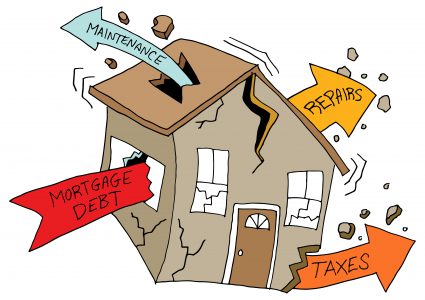Damages vs. Wear and Tear
Widget’s Way featuring Patti “Widget”
Your tenant has vacated the property and now you have 21 days to account for the security deposit. The law allows landlords to deduct portions of the security deposit to cover the cost of damages caused by a tenant. Landlords cannot deduct normal wear and tear, or the expected depreciation of a property. E.g. If carpeting has been destroyed and it is 8 years old, perhaps no allowance is appropriate as the floor coverings were due for replacement. Similarly, destruction of a brand new carpet may result in full replacement cost to be deducted from the deposit.
Wear And Tear
Normal wear and tear is the physical deterioration that occurs with normal use. Wear and tear generally excludes occupants’ or their guests’ negligence, carelessness, accident with, or abuse of the premises, fixtures, or chattel property. Normal wear and tear is deterioration or depreciation in value by ordinary and reasonable use.
Signs of everyday wear and tear are worn electrical switches, frayed pull strings on blinds, lightly scuffed hardwood floors, loose caulking, peeling wallpaper, faded curtains, and dirty window screens. Time and regular daily use can cause any of these items to become worn, which does not constitute damage.
Damages
When a tenant causes damage beyond normal use, a landlord has cause to charge the tenant for the damages. This may include damages inflicted by the tenants, their guests, or pets. Damage is usually caused by either intentional breakage and abuse or by negligence. Matted carpeting would be wear and tear, while burned or stained carpeting is clearly damage. Similarly, a few small nail holes would be wear and tear, while large holes in the wall can be classified as damage. Fingerprints and faded paint would constitute wear and tear, while large stains on the wall, ripped wallpaper or broken molding would be considered damage.
Why doesn’t the garbage disposal work? Is it 20 years old or does it have silverware lodged in it?
Other distinctions below include:
• The linoleum shows wear over years and must be replaced or the linoleum has stains and holes.
• Cracks in the walls must be repaired. Is this due to the structure settling or the tenant’s carelessness.
• Do you pick up a few left over toys and gardening tools in the backyard or do you need to haul loads of trash and debris.
Remember that state law defines the reasonableness standard. A tenant who is unhappy with the disposition of his/her deposit will file a claim against the landlord in court. The landlord must be careful that delayed or neglected maintenance does not contribute to the damage. E g. The wall behind the door is missing a doorstop and now there is a hole in the wall where the doorknob caused damaged. Leaking or dripping pipes can cause damage quickly and destroy cabinets and floors. Windows which are not securely shut can allow water from outside to damage woodwork and flooring as well. Any damages seen as the province of the landlord will certainly find disfavor with a judge.
Reasonableness of Wear and Tear
• State law determines the reasonableness of wear and tear, which often depends on the tenants’ length of residency. For instance, if the tenants lived in the property for three years, it may be reasonable to expect to paint the walls and clean the carpets. If the tenants lived in the property for six years, it may be reasonable to expect to replace the carpeting. The property owner typically bears the costs for normal wear and tear maintenance.
• Many courts will allow you to prorate the useful life of a damaged item. If the court believes that the useful life of carpeting in a rental dwelling is five years, then the cost of replacing the carpeting would have to be prorated over a five-year period. You cannot charge the former tenant the full replacement amount if items are past or well into their life expectancy.
• Keep in mind that the security deposit belongs to the tenants, and you act as an escrow agent to hold and care for the tenants’ deposit. However, the funds may revert to you at the end of the tenancy if you make a successful claim against the deposit (in compliance with local and state laws) or the tenants have otherwise forfeited the deposit through violation.
Common sense should guide you through the decision of what portion, if any, of the deposit is to be refunded. Just remember to keep good records and receipts. The ultimate determination of the deposit may be decided by a Judge in Court.

 Patti “Widget” is the marketing director for Fast Evict.com Law Group. She has 22 years’ experience as a regional property manager. Patti teaches several training classes, and has published articles for various apartment associations.
Patti “Widget” is the marketing director for Fast Evict.com Law Group. She has 22 years’ experience as a regional property manager. Patti teaches several training classes, and has published articles for various apartment associations.





